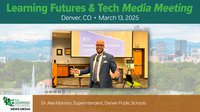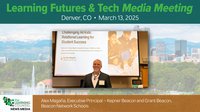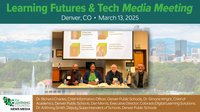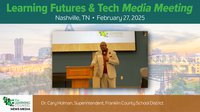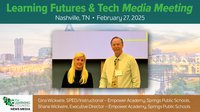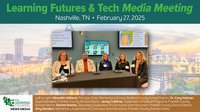Across the nation, educators are grappling with a crisis that extends beyond the classroom: declining student engagement and motivation. Chronic absenteeism, behavioral issues, and dwindling effort are not isolated problems but symptoms of a larger systemic issue—one deeply rooted in the way we approach learning.
For too long, our educational models have prioritized standardized testing, extrinsic rewards, and rigid structures while deprioritizing curiosity, joy, and meaningful learning. The result? Students who see school as something to endure rather than a place to explore and grow.
Part of the solution can be found in fostering a culture of hope, resilience, and belonging—three foundational elements that empower students to become meaning makers. Our latest white paper, “Students as Meaning Makers: Academic Solutions Aren’t Enough” offers up several key strategies to cultivate these attributes, ensuring students are not just absorbing information but actively constructing knowledge and honing essential durable skills.
The data is striking: while 86% of third graders report learning a great deal in school, only 44% of 12th graders say the same. The number of students who say they "love" school plummets from 74% in third grade to just 29% by senior year. Even more concerning, only 36% of middle and high school students feel they can develop their own ideas at school.
These statistics paint a clear picture: as students progress through the system, their engagement erodes.
What drives this decline? Three major forces are at play:
- Overemphasis on Extrinsic Motivation: Decades of standardized testing have shaped a generation that excels at test-taking but struggles with critical thinking and adaptability.
- Lack of Connection and Belonging: Students increasingly report feeling disconnected from their schools and peers.
- School Climates: When students do not feel safe, supported, or seen, disengagement follows.
Through our work with school districts around the nation we have found that when students have agency, feel connected to their learning, and have the confidence to navigate challenges, they transform into meaning makers—active participants in their educational journey. Hope, resilience, and belonging play a central role in creating a culture of success that then allows the district’s vision to come to life and maintain momentum.
Having hope, belonging, and resilience is more than wishful thinking. Science supports these attributes. Hope creates the ability to set goals, build pathways to achieve them, and maintain motivation despite obstacles. Research shows that students with high levels of hope perform better academically and are more engaged in learning.
Practical Strategies for Cultivating Engagement
Turning these principles into practice requires intentional effort. Here are just a few examples of ways to increase student engagement:
- Encourage Self-Regulation and Metacognition: Teach students how to reflect on their learning, set goals, and track progress.
- Foster Self-Efficacy and Agency: Give students leadership roles, engage them in project-based learning, and allow them to tackle real-world problems.
- Expand the Measures of Student Success: Move beyond only standardized tests as the central way to measure performance. Allow students to demonstrate durable skills like critical thinking, collaboration, and problem-solving.
At our company, we help districts create and implement a Portrait of a Graduate—a shared vision for what students should know and be able to do to leave high school future-ready. This framework highlights the durable skills like collaboration, communication, adaptability, and problem-solving. When schools align instruction, measurement, and culture around these competencies, students move from passive recipients of knowledge to active meaning makers.
The Portrait also reflects the shared hopes and aspirations of each unique community. By engaging an array of voices in creating it, school districts foster a sense of purpose and relevance in students’ learning experiences, making them more motivated and engaged.
Creating future-ready students requires more than academic rigor—it demands a learning culture built on connection, relevance, and empowerment. When students see themselves as meaning makers, they become lifelong learners equipped with the confidence and skills to navigate an unpredictable world.
By embracing the principles of meaning making, we can reshape education into a system where students don’t just survive—but flourish.
About the author
Mike Duncan, Ed.D., is President and CEO, Battelle for Kids


